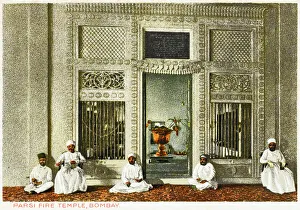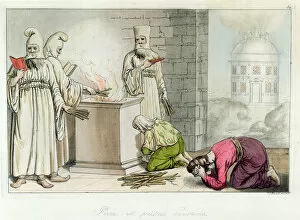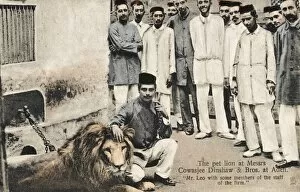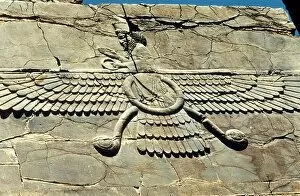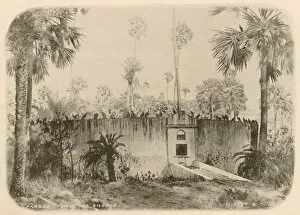Zoroastrians Collection
Zoroastrians, also known as Parsis, are followers of the ancient Persian religion of Zoroastrianism
All Professionally Made to Order for Quick Shipping
Zoroastrians, also known as Parsis, are followers of the ancient Persian religion of Zoroastrianism. One of their most sacred places is the Parsi Fire Temple in Bombay, where they gather to worship and offer prayers to Ahura Mazda, the supreme deity in their faith. In Aden, Yemen, a surprising sight awaits visitors at a company - a pet lion. This unique bond between humans and animals reflects the deep respect for nature that Zoroastrians hold dear. The Parsee Towers of Silence stand as solemn reminders of Zoroastrian burial customs. These circular structures were used to expose deceased bodies to vultures and other scavengers, following the belief that this method would prevent pollution of natural elements such as earth or fire. Historical views of Persia (Iran) showcase the rich cultural heritage associated with Zoroastrianism. From magnificent palaces to intricate artwork, these images depict a civilization deeply influenced by its religious beliefs. Wedding ceremonies among ancient Persian they were grand affairs filled with rituals and traditions symbolizing purity and unity. The couple exchanged vows under the blessings of fire and witnessed by family members who held great importance in upholding ancestral customs. Initiation ceremonies played a crucial role in welcoming new disciples into Zoroastrianism. Through purification rituals and teachings from priests called Mobeds, individuals embraced this faith's principles centered around good thoughts, good words, and good deeds. Ateseh-Gah in Baku showcases Indians devoted to the cult of fire within Azerbaijan's capital city. This place serves as an important center for spiritual practices related to fire worship within Indian communities residing there. Illustrations from "Il Costumo Antico e Moderno" depict pyres with Persian priests performing sacred rites. These visuals provide glimpses into ancient ceremonial practices carried out by dedicated clergy members who served as intermediaries between mortals and divine forces.

